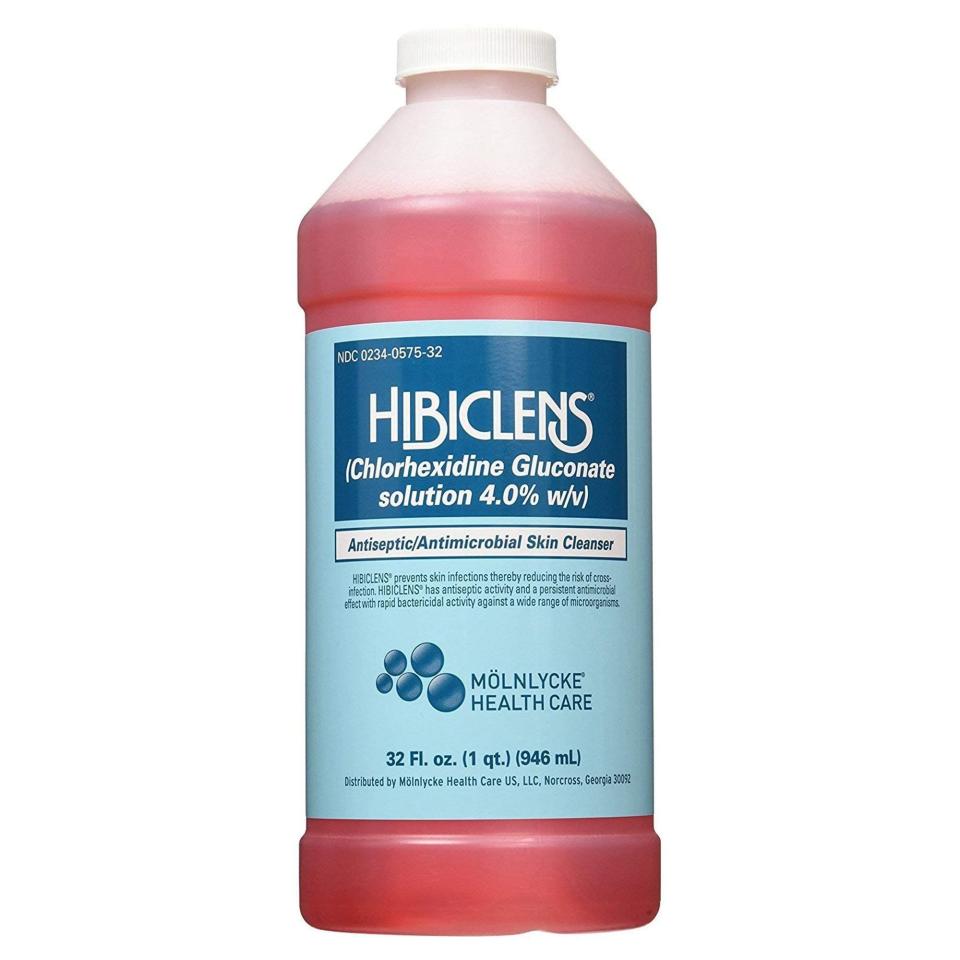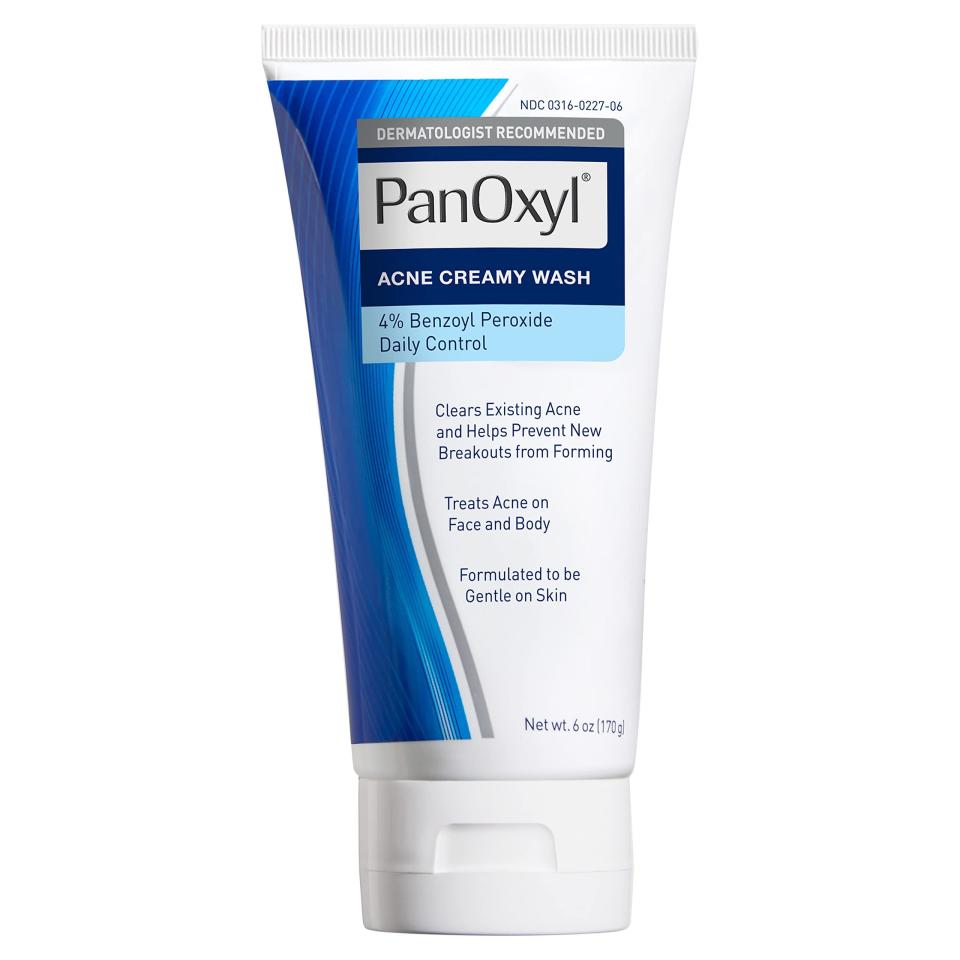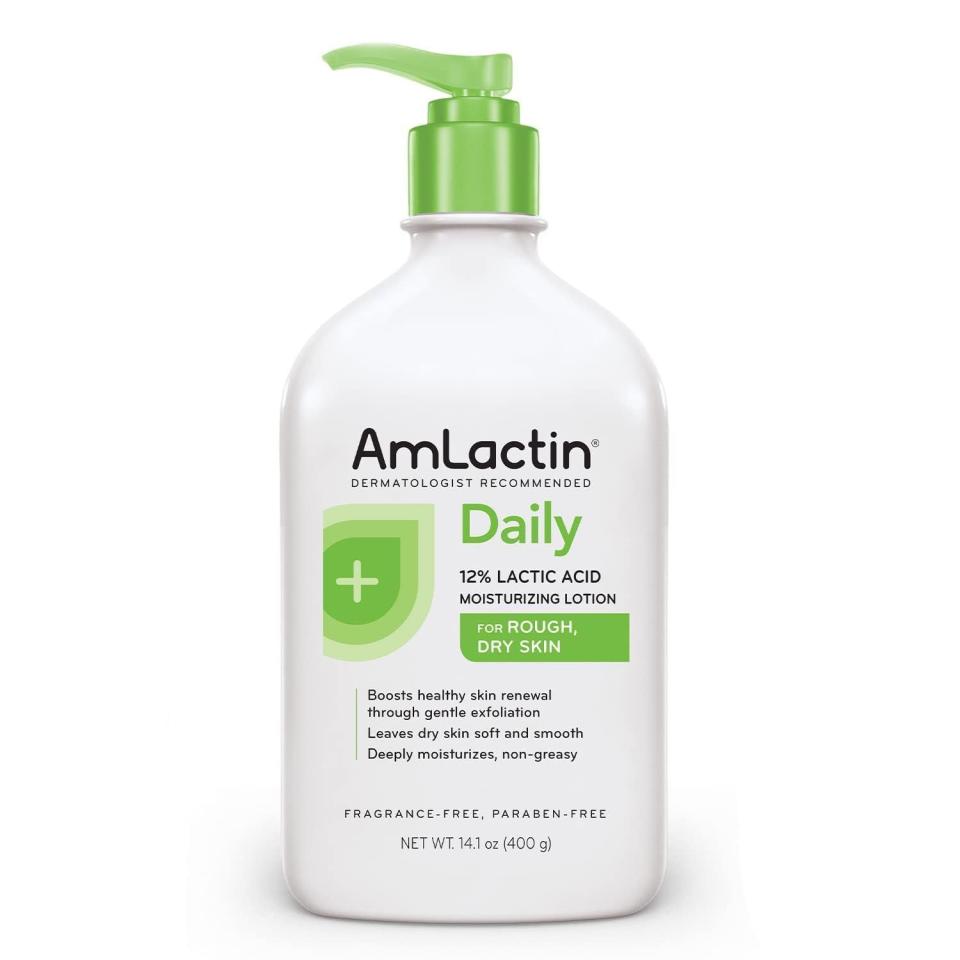Dermatologists Explain How to Get Rid of Butt Acne for Good

"Hearst Magazines and Yahoo may earn commission or revenue on some items through these links."
[table-of-contents] stripped
Acne is a bummer—especially when it pops up in sensitive places. If you’ve ever had butt acne then you know it might just be one of the most annoying (and painful) places for a breakout. And while pimples know no boundaries (i.e. chin acne and scalp acne), it turns out pimples on your behind might not actually be considered butt acne in the first place.
“More commonly, when people talk about butt acne, it’s often folliculitis and that is because there are hair follicles there,” explains Karan Lal, D.O., M.S., F.A.A.D., double board-certified dermatologist with Affiliated Dermatology in Scottsdale, AZ. “This area is prone to friction, heat, and sweat, all of which can irritate the hair follicles and cause folliculitis—very rarely is it truly acne.”
Meet the experts: Karan Lal, D.O., M.S., F.A.A.D., double board-certified dermatologist with Affiliated Dermatology in Scottsdale, AZ; and Marisa Garshick, M.D., a leading board-certified dermatologist at Manhattan Dermatology and Cosmetic Surgery in NYC
However, in addition to butt acne and folliculitis, there are a number of other conditions that can cause butt rashes, bumps, pimples, and boils. If the breakouts on the butt are like the acne that occurs on the face, or something else altogether, “Some of the triggers for breakouts on the face can also contribute to butt breakouts,” explains Marisa Garshick, M.D., a leading board-certified dermatologist at Manhattan Dermatology and Cosmetic Surgery in NYC. “For some individuals, there can also be a hormonal component to breakouts on the butt.”
If you see bumps of any kind on your behind, getting rid of butt acne is likely top of mind. Ahead, learn what’s causing your breakouts, how to treat butt acne, and how to prevent those pesky pimples from returning.
Butt acne causes
There are many potential causes for “butt acne,” but dermatologists agree that these are the most common conditions for bumps and breakouts on your behind:
Excess oil and dead skin cells
“While butt acne may not appear exactly the same as acne on the face, there are overlapping features,” explains Dr. Garshick. “In general, we think of acne as being caused by excess oil and dead skin cells that clog the pores, acne-causing bacteria known as Cutibacterium acnes, and inflammation.” A sign that you are experiencing true butt acne would be having pus-filled bumps, inflamed bumps, and/or nodules in the area.
Folliculitis
According to Dr. Lal and Dr. Garshick, folliculitis is the most common condition that mimics butt acne. “It tends to appear as red bumps and pus bumps and often occurs as a result of inflammation of the hair follicle and can be associated with bacteria,” says Dr. Garshick. “While not the same as traditional acne, some of the treatment options are the same including benzoyl peroxide and clindamycin.”
Rash associated with a yeast infection
Yeast infections can occur in a few places, including the skin. If you have a yeast infection on the skin of your buttocks, the area will likely be red and irritated, and be accompanied by red bumps or papules that can be mistaken for acne, says Dr. Lal. You may also notice a sour odor.
Hidradenitis suppurativa
Hidradenitis suppurativa is a chronic condition that usually occurs on the buttocks area, groin, genital area, and underarms, and causes painful bumps, cysts, and nodules that can be confused for acne, explains Dr. Lal.
Keratosis pilaris
If you experience “rough, bumpy skin on the buttocks that is not actually related to acne,” then you may have keratosis pilaris, a relatively harmless skin condition that causes dry patches and tiny bumps on areas like the upper arms, thighs, and buttocks, says Dr. Garshick. This condition is best treated with gentle exfoliation and hydrating products.
Molluscum
Molluscum contagiosum is a viral skin infection that causes small, raised bumps and spreads easily. Molluscum usually occurs in children, but in adults, is often spread sexually, says Dr. Lal
Psoriasis
Psoriasis is a common disease in which the immune system becomes overactive, causing skin cells to multiply too quickly, per the National Institute of Health. As with skin on the rest of the body, psoriasis can also occur on the buttocks, Dr. Lal notes. However, while psoriasis generally presents as a scaly rash, when it appears on the buttocks it can cause red bumps since the area is more prone to sweat and occlusion.
Butt acne treatments
There are several at-home treatments for butt acne and breakouts on the butt. Experts recommend the following options:
Try a cleanser
First, be sure to use a good cleanser. Dr. Garshick recommends using a cleanser with ingredients like benzoyl peroxide or salicylic acid to help unclog the pores. In the cases of folliculitis or a bacterial infection, using an antibacterial wash such as Hibiclens can be helpful.
Use a specific kind of moisturizer
It’s also helpful to use a moisturizer with ingredients like lactic acid, glycolic acid, or salicylic acid, says Dr. Lal. “These are products that are going to exfoliate and moisturize the area,” leading to fewer bumps.
Antimicrobial/Antiseptic Skin Cleanser

Antimicrobial/Antiseptic Skin Cleanser
amazon.com
$15.60
HibiclensAcne Creamy Wash

Acne Creamy Wash
amazon.com
$9.37
PanOxylDaily Moisturizing Lotion

Daily Moisturizing Lotion
amazon.com
$16.77
AmLactinReconsider shaving the area
Dr. Lal also advises those who shave the area to be extremely careful and suggests trying laser hair removal instead (which he says is one of the best treatments for folliculitis). If you do decide to shave, “make sure that you are using a razor with multiple blades and change your razor often to avoid irritation and introducing bacteria to the area.”
Topical or oral prescription
If none of the above treatment options offer improvement, it’s best to visit your doctor. In some cases, especially those that are inflamed or bacterial, “a topical or oral prescription may be needed, so it is always good to check with a board-certified dermatologist,” says Dr. Garshick.
How to prevent butt acne
Gently exfoliate. Using the same kind of exfoliating cleansers and moisturizers that you would use to clear up a bout of face acne are also helpful in preventing butt acne and other bumps, according to our experts.
Shower after sweating. “It is common for people to notice more acne on their buttocks if they are exercising and sweating more,” explains Dr. Garshick. “When sweat sits on the skin for an extended period of time, it can lead to clogged pores. To help this, it is best to shower or wipe down after a workout and remove sweaty clothing.”
Wear breathable clothing. Dr. Garshick also explains that wearing clothes that fit too tightly, whether working out or not, can trap sweat and moisture, leading to increased breakouts.
Avoid prolonged sitting. Due to increased pressure and friction, sitting for long periods of time can increase breakouts by irritating the hair follicles, says Dr. Garshick.
Be mindful of the products you use. “It is important to avoid any heavy oils or products that may be pore-clogging,” explains Dr. Garshick. Instead stick to lightweight, non-comedogenic lotions or products that offer antibacterial or exfoliating benefits.
You Might Also Like

